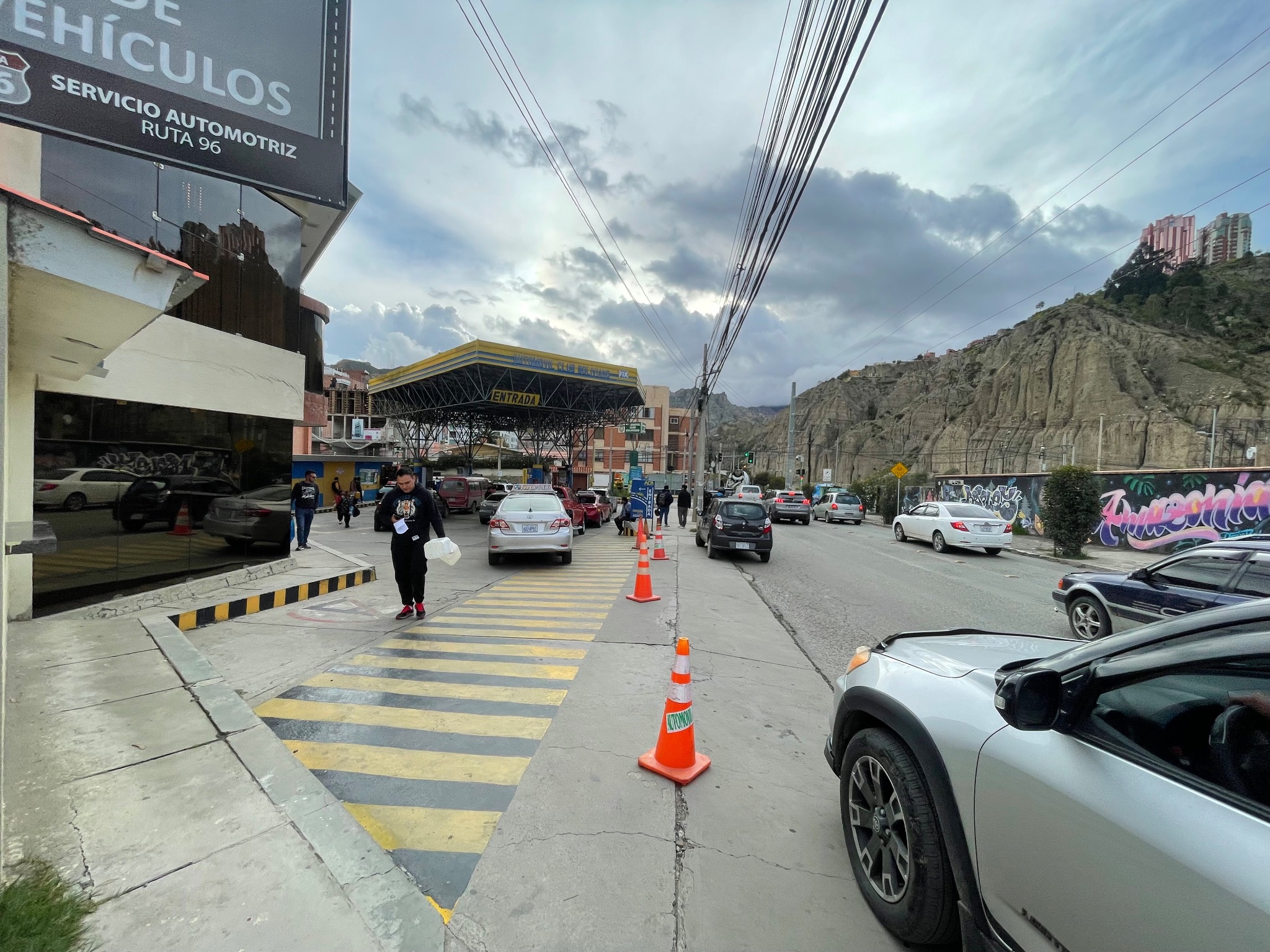A Temporary Respite in Bolivia's Fuel Crisis
After around three weeks of fuel shortages, Bolivians no longer have to queue at gas stations—for now. But with elections approaching, political motives behind the crisis are coming under scrutiny.
For nearly three weeks, Bolivians waited for hours at gas stations to fill up their cars. Now, the situation in the Bolivian fuel market appears to be easing, and gasoline is once again available. Similar shortages occurred multiple times last year. At gas stations, a liter of gasoline usually costs between 3 and 4 Bolivianos (approximately 0,30 Euro), far below the purchase price on international markets, which is around 12 Bolivianos (about 1 Euro). The state covers the 8-Boliviano gap per liter as a subsidy. However, Bolivia has limited dollar reserves to purchase fuel, which is traded in US dollars.
From Economic Boom to Budget Deficit
Before the 2019 presidential elections, Bolivia’s economy was doing well. Fueled by high foreign exchange earnings from the gas sector and high prices for minerals, the government was able to finance social benefits in the form of various subsidies for pensioners (Renta Dignidad) and families (Juancito Pinto for school attendance). The state apparatus expanded, providing many people with new government jobs. But those days are over. Argentina is no longer importing as much Bolivian gas as before. Economic struggles and political uncertainties have also taken their toll.
Elections Loom Amid Crisis
In August, Bolivia will elect a new president and parliament. So far, neither the left nor the right has a clear frontrunner. The socialist MAS (Movement for Socialism) party has been the dominant political force in Bolivia for the past 20 years. However, for over a year, the party has been deeply divided due to internal conflicts between former President Evo Morales and current President Luis Arce. Recently, former President Tuto Quiroga withdrew from the united opposition primaries, leaving the opposition more fractured. Some say he was afraid to lose against the other opposition frontrunner and businessman Samuel Doria Medina, who will now lead the block into the next elections.
Crisis or Calculated Move?
There is growing speculation on the streets that the recent fuel shortage might be politically motivated. Some believe that Senate President Andrónico Rodríguez (also from MAS) may have deliberately withheld necessary loans for fuel imports as a political maneuver to pressure President Arce and his vice president, David Choquehuanca. Without fuel, mobility in the country is severely restricted, potentially leading to protests that could force Arce and Choquehuanca to resign. This, in turn, could create an opportunity for Rodríguez to take over as interim president, securing power for himself or paving the way for Evo Morales to run again—despite constitutional term limits preventing him from doing so. However, such a scenario has not yet materialized. Recently it seems like the Senate President is preparing to run on his own platform. He criticized Morales for choosing Arce as the candidate for the elections in 2020, who, in his view, is responsible for the economic downturn. Some analysts interpreted this as a breaking away from Morales.
A Country Dependent on Fuel
People in Bolivia, are heavily reliant on a stable fuel supply due to a lack of alternatives. In La Paz and El Alto, hundreds of minibuses usually navigate the streets, transporting residents across the metropolitan area. In other cities, larger microbuses, similar in size to American school buses, dominate public transportation. Goods from agricultural regions in Bolivia’s lowlands are transported to the Altiplano, which sits at 4,000 meters above sea level and includes major cities like Oruro, Potosí, La Paz, and El Alto. Without fuel, life comes to a standstill. Moreover, most railway tracks from past centuries are no longer in operation.
Temporary Fixes, Lasting Inequality
To alleviate the effects of the fuel shortage, President Arce extended the operating hours of the cable car system in La Paz and El Alto. These two cities in the Andes boast the world’s largest interconnected public transport network using cable cars. However, the network only covers a fraction of the urban area. In El Alto, in particular, there are significant gaps in the system. Moreover, the cable cars have limited capacity, leading to long queues at the stations.
Another measure to conserve fuel was the temporary reinstatement of online schooling. During the COVID-19 pandemic, Bolivia’s government relied heavily on remote education for an extended period. Back then, it became evident that financially disadvantaged children suffered the most from this system due to a lack of digital devices and sufficient space for studying at home.
With fuel supplies restored, people in Bolivia can finally breathe a sigh of relief. However, last year's recurring shortages have shown how volatile the market is, and thus many hope that a steady fuel supply will continue in the future.



Post a comment